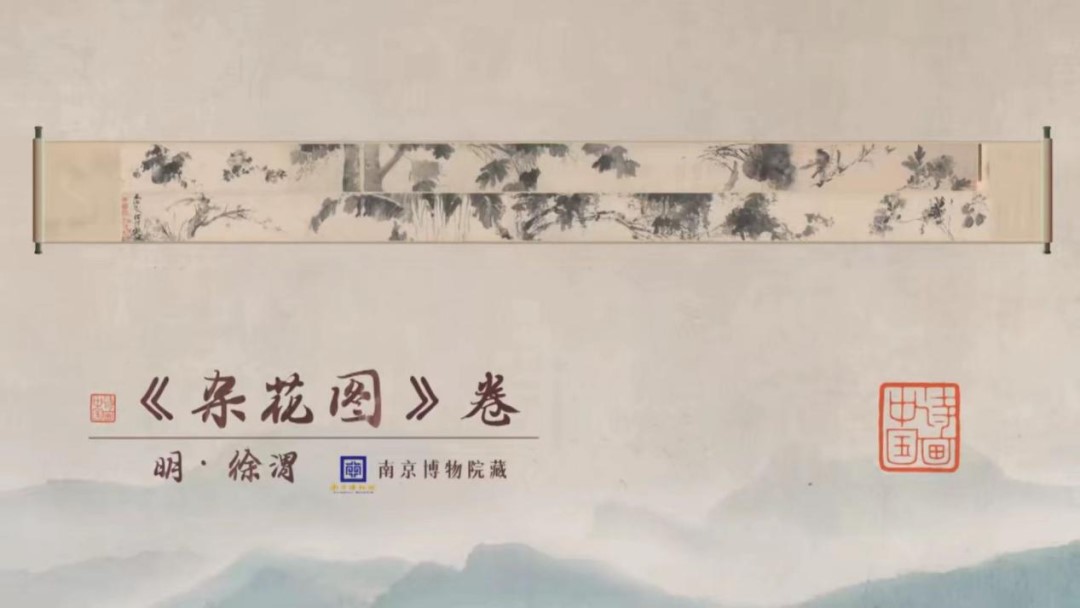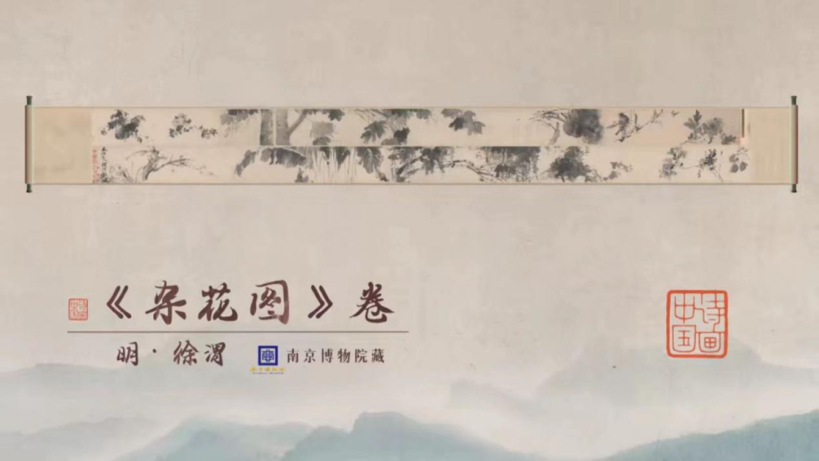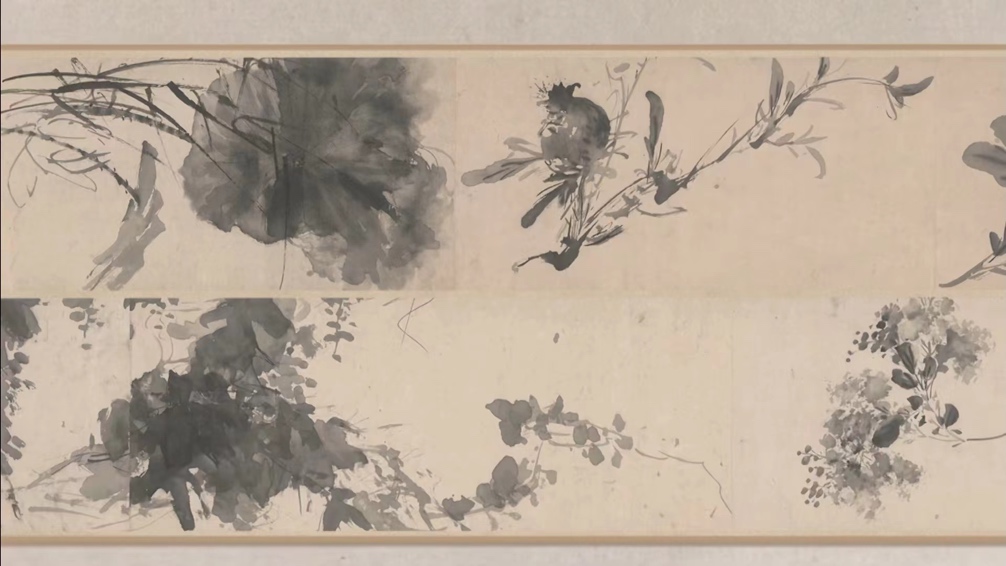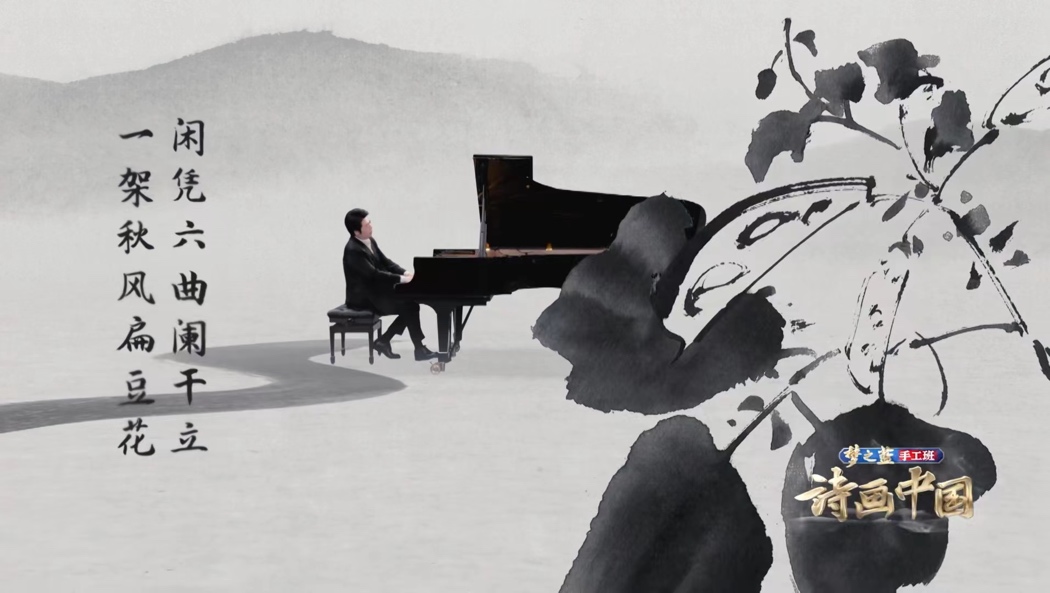Who says Chinese literati painters only love the "Four Gentlemen" (Chinese plum blossoms, orchid, bamboo, and chrysanthemum)? Who says that peony flowers always have to look dignified and graceful in literati paintings? Who says that lotus leaves always have to be presented in a fresh and refined style by literati painters?
Xu Wei, a famous calligrapher and artist from the Ming Dynasty (1368-1644), was highly esteemed for his freehand brushwork and preferred wildflowers like lentils, pumpkins, and wisteria. In his view, all plants are created equal and worth painting, a philosophy well embodied by his representative work, "Miscellaneous Plants."
Produced by China Media Group, the cultural program "China in Poetry and Painting" invited renowned pianist Lang Lang to play a piece that synthesizes the Chinese folk song "Moli Hua" (Jasmine Flower) with Claude Debussy's "Moonlight" and Edvard Grieg's "Piano Concerto," thus translating the visual aesthetic of this ancient masterpiece into an exciting auditory sensation to give audiences a special treat.
07:18

Now housed at the Nanjing Museum, "Miscellaneous Plants" is Xu Wei's representative work of freehand brushwork in ink-wash painting. Not only did he depict 13 kinds of plants on the 10-meter-long scroll, including peony, pomegranate, wisteria, pumpkin, plum blossom, lotus leaves, and bamboo, but he intentionally changed their nature by painting them with ink and wash while eschewing most of the colors at his disposal.

"Miscellaneous Plants," an ink-wash painting by Xu Wei. /CGTN
"Miscellaneous Plants," an ink-wash painting by Xu Wei. /CGTN
Xu Wei once said that when painting his subjects, he never sought verisimilitude but aimed to capture their spirit. To achieve that goal, he unleashed his brush with passionate abandon in his ink paintings, galloping vertically and horizontally across his canvas and dripping ink on the paper without any restrictions. As both a calligrapher and a painter, Xu integrated his calligraphy skills and techniques into his ink paintings to infuse them with greater energy and presence.

Details of "Miscellaneous Plants," an ink-wash painting by Xu Wei. /CGTN
Details of "Miscellaneous Plants," an ink-wash painting by Xu Wei. /CGTN
In the view of Beijing Normal University Professor Kang Zhen, Xu's unrestrained brushwork relates to his turbulent life. Born to a waning powerful family, Xu attempted to pass the civil service examinations eight times without any luck. So in his later years, he was able to use all of his past grief and express this whirlwind of torment and emotion with his brushwork, using lines of varying size, hurried texture strokes, and wet and diluted ink.

The animation effect shows pianist Lang Lang playing a piano piece inspired by Xu Wei's most famous painting. /CGTN
The animation effect shows pianist Lang Lang playing a piano piece inspired by Xu Wei's most famous painting. /CGTN
The acclaimed shrimp painter Qi Baishi once said, "How I wish I had been born 300 years earlier so I could grind ink and prepare paper for Green Vine (one of Xu Wei's pen names)." By using swaying and indulgent brush and ink techniques, Xu not only depicted his subjects clearly and simply but also expressed his own strong emotions in his art. Such pioneering efforts were highly appreciated by future generations, ultimately pushing Chinese freehand paintings of flowers and birds to a whole new level.